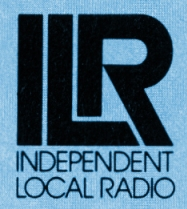Related Research Articles
Telecommunications in Botswana include newspapers, radio, television, fixed and mobile telephones, and the Internet.
Telecommunications had an early beginning in Mauritius, with the first telephone line installed in 1883, seven years after the invention of the telephone. Over the years, the network and telephony improved. By the late 20th century, the rapid development and convergence of information and telecommunications technologies gave rise to an ICT industry on the island along with many incentives provided by the government. The government thus aims to make the ICT sector the 5th pillar of the Mauritian economy and Mauritius a Cyber Island. Historically, the country is known for tourism, rather than its call centers and business process outsourcing.

MPEG-2 is a standard for "the generic coding of moving pictures and associated audio information". It describes a combination of lossy video compression and lossy audio data compression methods, which permit storage and transmission of movies using currently available storage media and transmission bandwidth. While MPEG-2 is not as efficient as newer standards such as H.264/AVC and H.265/HEVC, backwards compatibility with existing hardware and software means it is still widely used, for example in over-the-air digital television broadcasting and in the DVD-Video standard.

Digital Video Broadcasting (DVB) is a set of international open standards for digital television. DVB standards are maintained by the DVB Project, an international industry consortium, and are published by a Joint Technical Committee (JTC) of the European Telecommunications Standardisé Institute (ETSI), European Committee for Electrotechnical Standardization (CENELEC) and European Broadcasting Union (EBU).

The Independent Television Commission (ITC) licensed and regulated commercial television services in the United Kingdom between 1 January 1991 and 28 December 2003.

Advanced Television Systems Committee (ATSC) standards are an American set of standards for digital television transmission over terrestrial, cable and satellite networks. It is largely a replacement for the analog NTSC standard and, like that standard, is used mostly in the United States, Mexico, Canada, and South Korea. Several former NTSC users, in particular Japan, have not used ATSC during their digital television transition, because they adopted their own system called ISDB.
Digital terrestrial television is a technology for terrestrial television in which land-based (terrestrial) television stations broadcast television content by radio waves to televisions in consumers' residences in a digital format. DTTV is a major technological advance over the previous analog television, and has largely replaced analog which had been in common use since the middle of the 20th century. Test broadcasts began in 1998 with the changeover to DTTV beginning in 2006 and is now complete in many countries. The advantages of digital terrestrial television are similar to those obtained by digitising platforms such as cable TV, satellite, and telecommunications: more efficient use of limited radio spectrum bandwidth, provision of more television channels than analog, better quality images, and potentially lower operating costs for broadcasters.

Independent Local Radio is the collective name given to commercial radio stations in the United Kingdom. As a result of the buyouts and mergers permitted by the Broadcasting Act 1990, and deregulation resulting from the Communications Act 2003, most commercial stations are now neither independent nor local. The same name is used for Independent Local Radio in Ireland.

1080p is a set of HDTV high-definition video modes characterized by 1,920 pixels displayed across the screen horizontally and 1,080 pixels down the screen vertically; the p stands for progressive scan, i.e. non-interlaced. The term usually assumes a widescreen aspect ratio of 16:9, implying a resolution of 2.1 megapixels. It is often marketed as Full HD or FHD, to contrast 1080p with 720p resolution screens. Although 1080p is sometimes informally referred to as 2K, these terms reflect two distinct technical standards, with differences including resolution and aspect ratio.

MultiChoice is a South African company that operates DStv, a major satellite television service in Sub-Saharan Africa and GOtv, a minor service operating in over 9 countries of this area and Showmax service. MultiChoice was formed out of the subscriber-management branch of the M-Net terrestrial pay television company, and broadcasts the full range of M-Net channels on the DStv service. MultiChoice is owned by the media conglomerate of the same name. One of the subsidiaries of MultiChoice is DStv Now, renamed as DStv App, a service that delivers television transmission to mobile devices such as laptops, smart phones and notebooks.
Television in Germany began in Berlin on 22 March 1935, broadcasting for 90 minutes three times a week. It was home to the first public television station in the world, named Fernsehsender Paul Nipkow. The German television market had approximately 36.5 million television households in 2000, making it the largest television market in Europe. Nowadays, 95% of German households have at least one television receiver. All the main German TV channels are free-to-air.
ISDB-T International, or SBTVD, short for Sistema Brasileiro de Televisão Digital, is a technical standard for digital television broadcast used in Brazil, Argentina, Peru, Botswana, Chile, Honduras, Venezuela, Ecuador, Costa Rica, Paraguay, Philippines, Bolivia, Nicaragua, El Salvador and Uruguay, based on the Japanese ISDB-T standard. ISDB-T International launched into commercial operation on 2 December 2007, in São Paulo, Brazil, as SBTVD.

The Broadcasting Act, given royal assent on 1 February 1991, is an act of the Parliament of Canada regarding broadcasting of telecommunications in the country.

Botswana Television is the national broadcaster in Botswana. Botswana's first national television service started in 2000 following a 1997 government decision. The station delivers thirteen hours of local and international programmes daily on weekdays and 13 hours of programming on weekends.

Raidió Teilifís Éireann (RTÉ) is the national broadcaster of Ireland headquartered in Donnybrook, Dublin. It both produces and broadcasts programmes on television, radio and online. The radio service began on 1 January 1926, while regular television broadcasts began on 31 December 1961, making it one of the oldest continuously operating public service broadcasters in the world. RTÉ also publishes a weekly listings and lifestyle magazine, the RTÉ Guide.
Botswana Telecommunications Authority (BTA) is a dissolved independent commission that was responsible for regulating all matters related to telecommunications, postal services of Botswana and has been succeeded by Botswana Communications Regulatory Authority. The Minister appoints all five board members, who serve on a part-time basis. The BTA is mandated to promote the development and provision of efficient telecommunications and broadcasting services in Botswana, under the terms of the Telecommunications Act 15 of 1996. There have been legal disputes between the BTA and licensed operators, springing from issues related to interconnection and pricing.

The Tanzania Communications Regulatory Authority (TCRA), established by the TCRA Act No. 12 of 2003, is an independent Authority for the postal, broadcasting and electronic communications industries in the United Republic of Tanzania. It merged the former Tanzania Communications Commission and the Tanzania Broadcasting Commission. The TCRA is accountable to the Communications and Technology Ministry. The Information Communication and Technology (ICT) sector reform in Tanzania is notable in that development was influenced by regional, political (national) and technological factors. Tanzania is one of the few African countries to liberalise the communications sector whereby the Converged Licensing Framework (CLF) is used as a key strategy, in terms of the Tanzania Communications Regulations. Since inception in 2003, the TCRA has issued a number of regulations to administer the sector, but still faces a number of challenges such as the roll-out of services to under-serviced rural areas.
CCETT or Centre commun d'études de télévision et télécommunications was a research centre created in Rennes (France) in 1972 jointly by the Office de Radiodiffusion Télévision Française (ORTF) and Centre National d'Etudes des Telecommunications (CNET) for development of new techniques for processing, transmission and distribution of audiovisual signals.

The Broadcasting Authority of Ireland (BAI) was established on 1 October 2009 effectively replacing the Broadcasting Commission of Ireland (BCI).
References
- ↑ "Archived copy" (PDF). Archived from the original (PDF) on 2008-11-21. Retrieved 2010-05-13.
{{cite web}}: CS1 maint: archived copy as title (link) - ↑ "Broadcasting Regulations - Departments - Botswana Telecommunications Authority". Archived from the original on 2008-09-22. Retrieved 2010-05-13.
- ↑ "Chairman of the National Broadcasting Board v Multi Choice Botswana (Pty) Ltd (CACLB-023-07) [2007] BWCA 1 (26 July 2007)".
- ↑ ":: Welcome to Ministry of Communications, Science and Technology ::". www.mcst.gov.bw. Archived from the original on 29 November 2006. Retrieved 6 June 2022.
- ↑ http://www.bta.org.bw/pubs/AnnualReport/Anual_Report_08.pdf%5B%5D